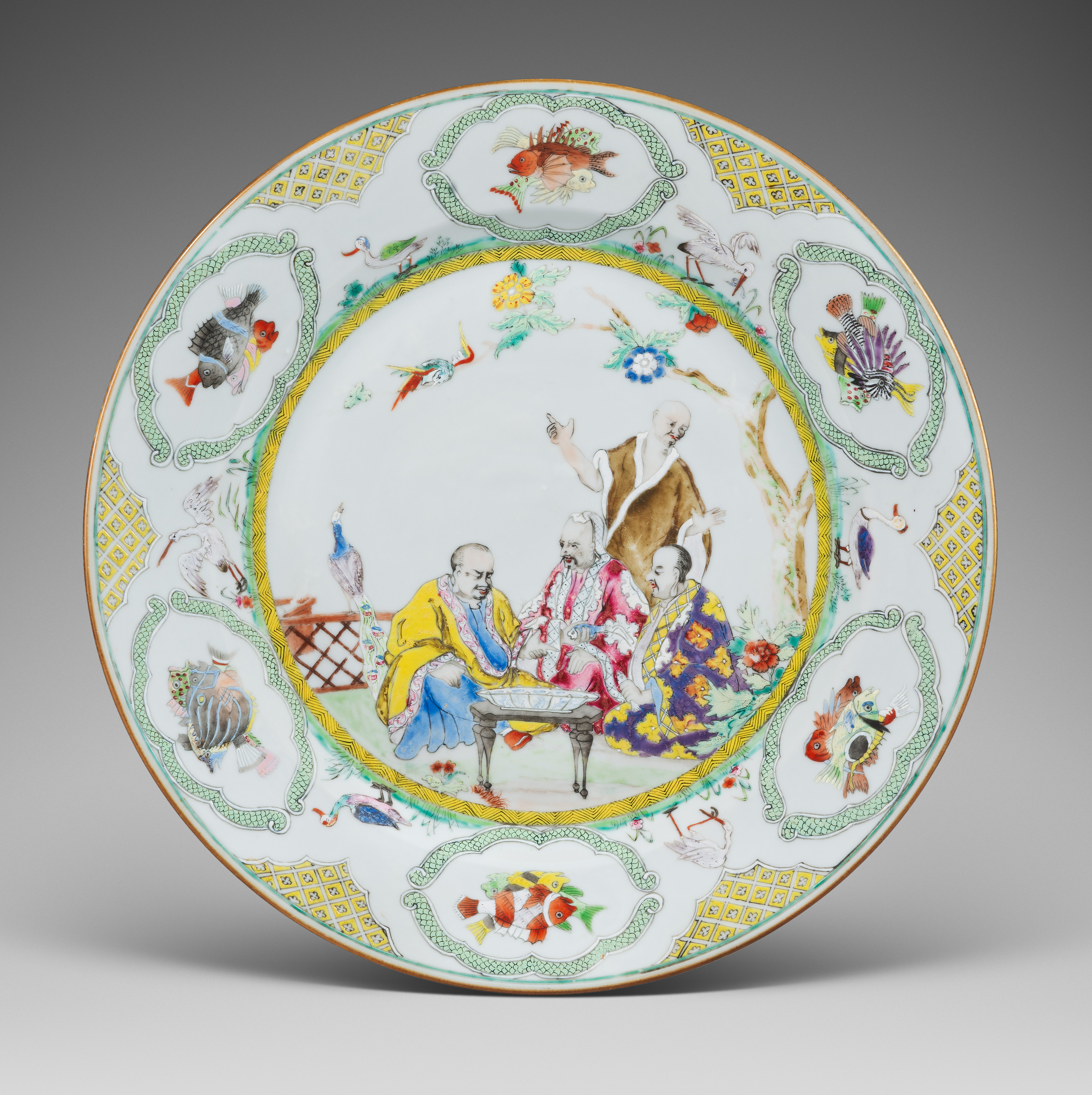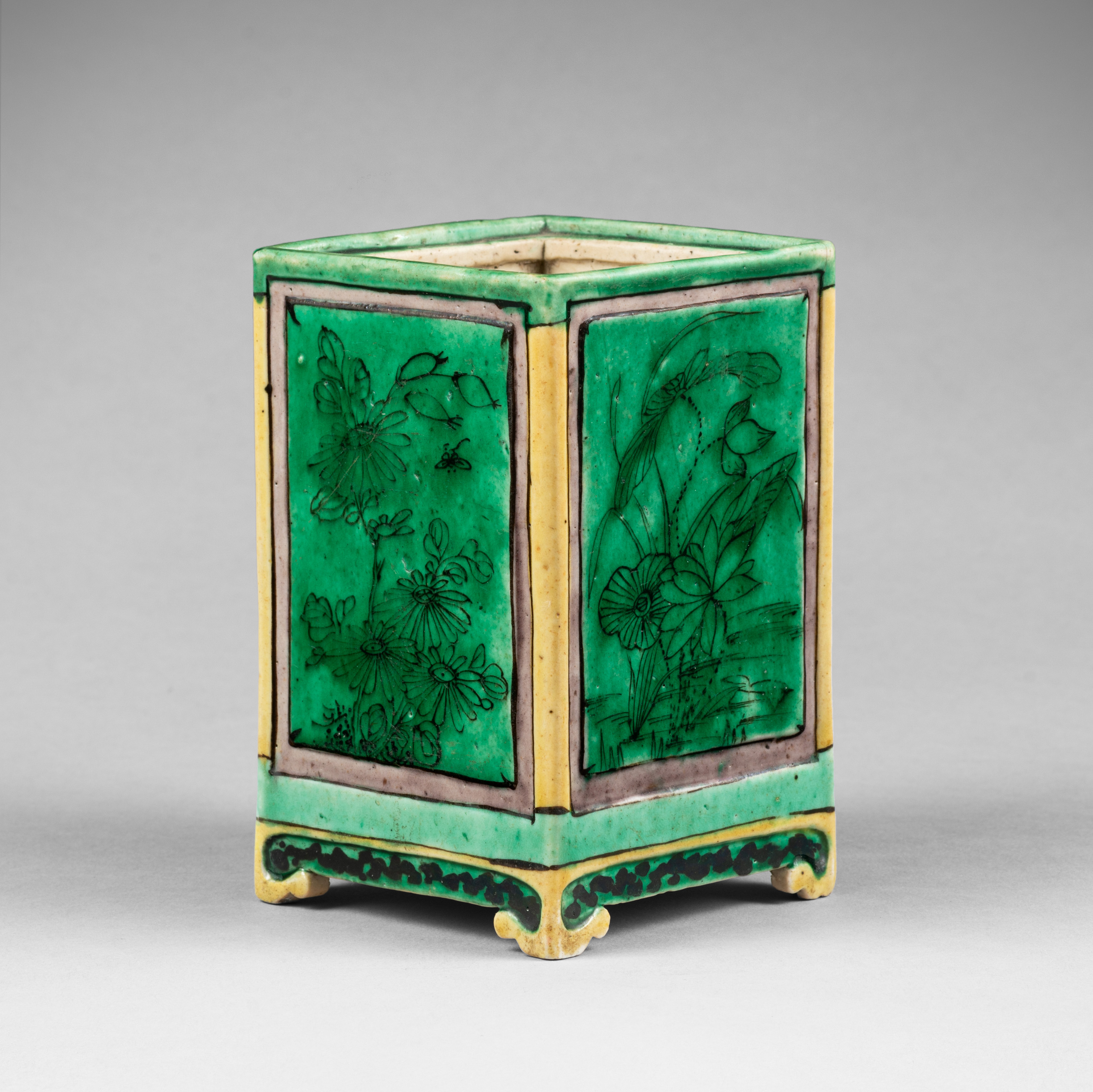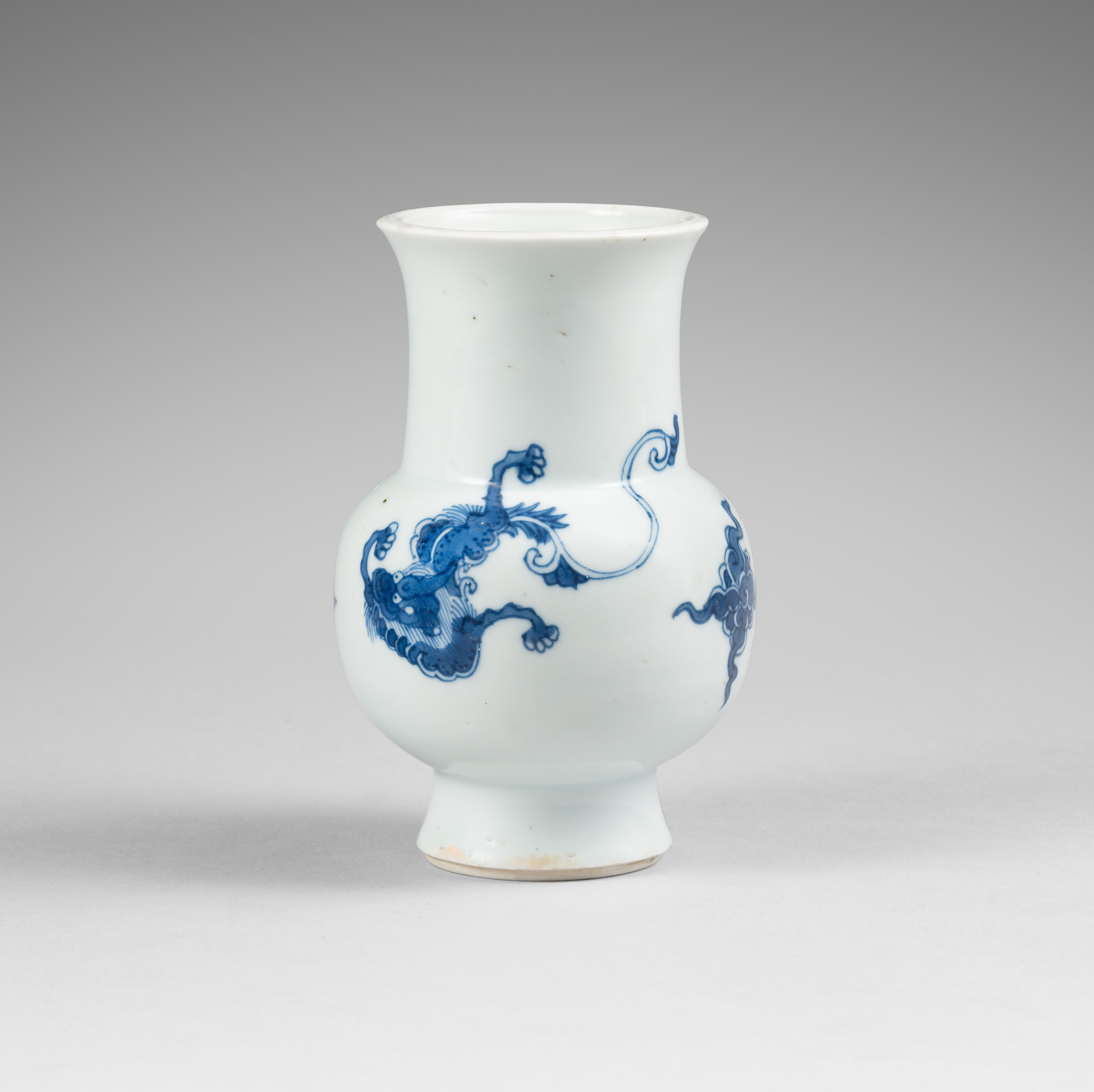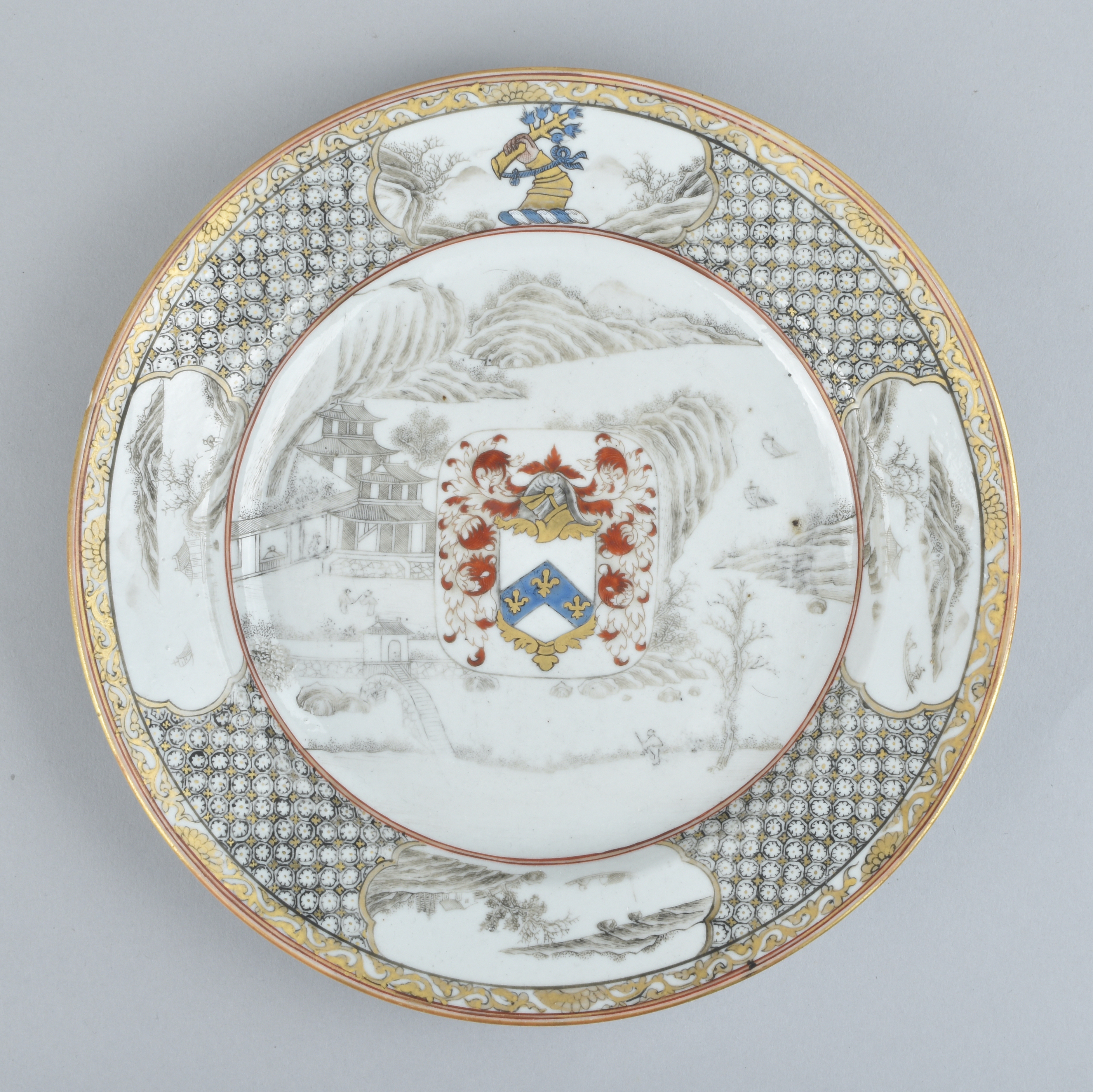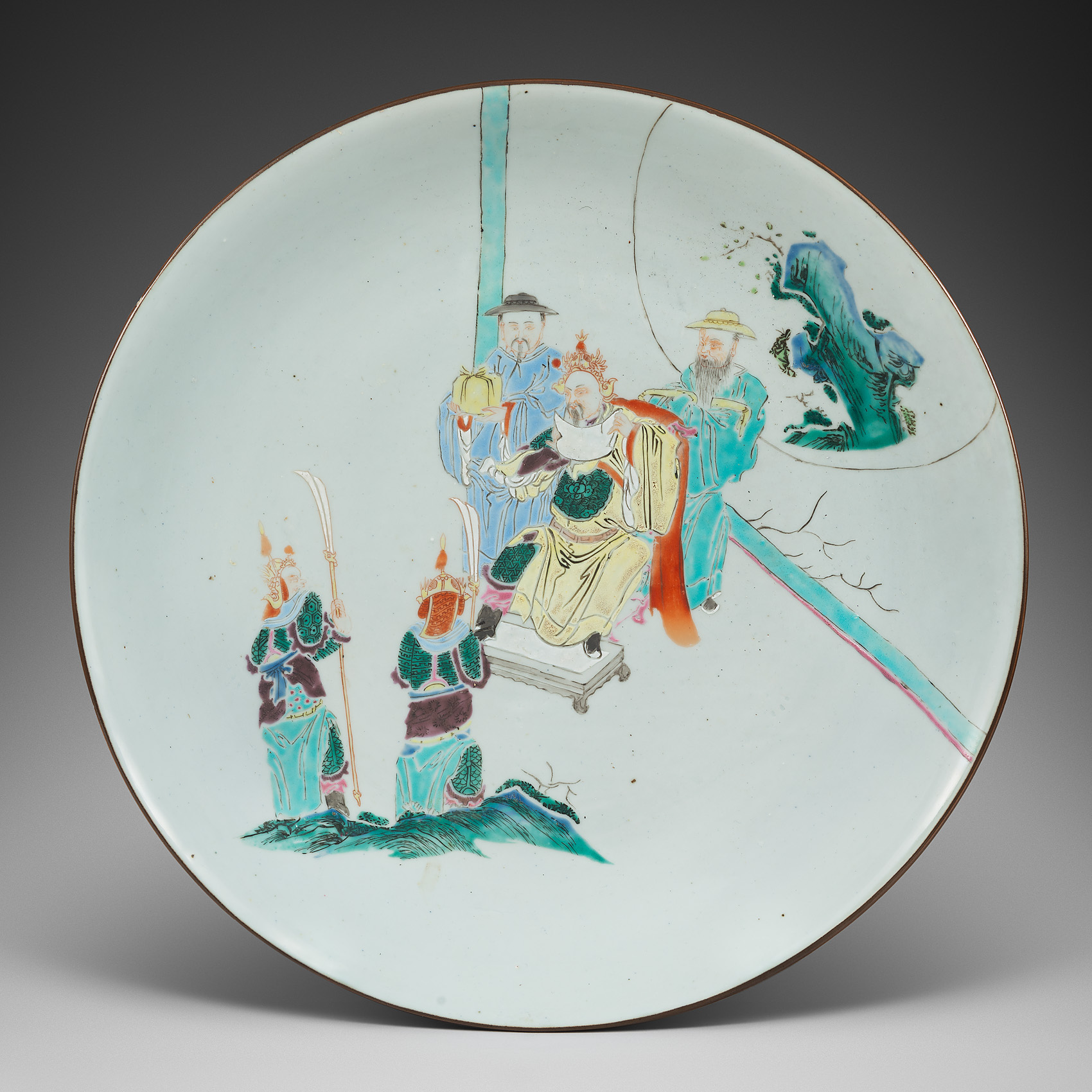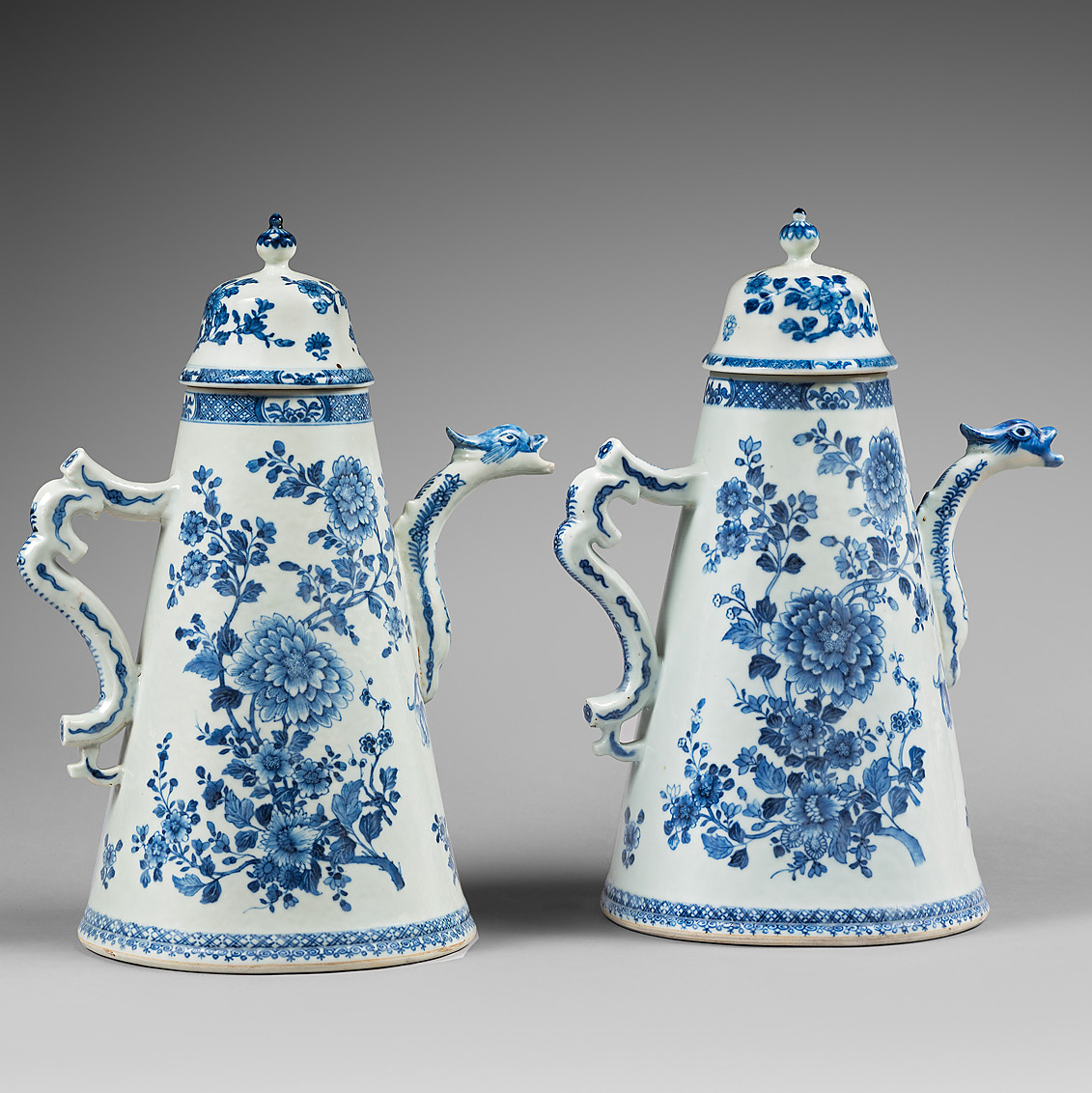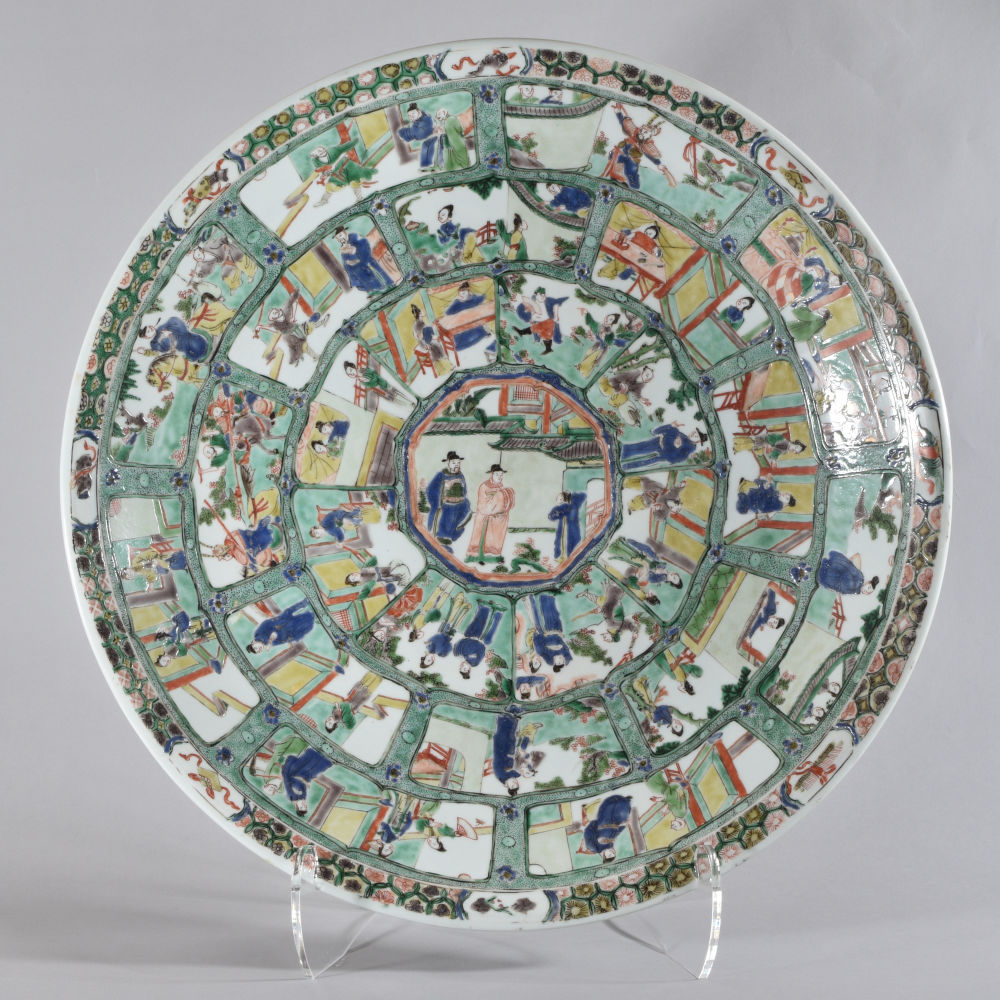
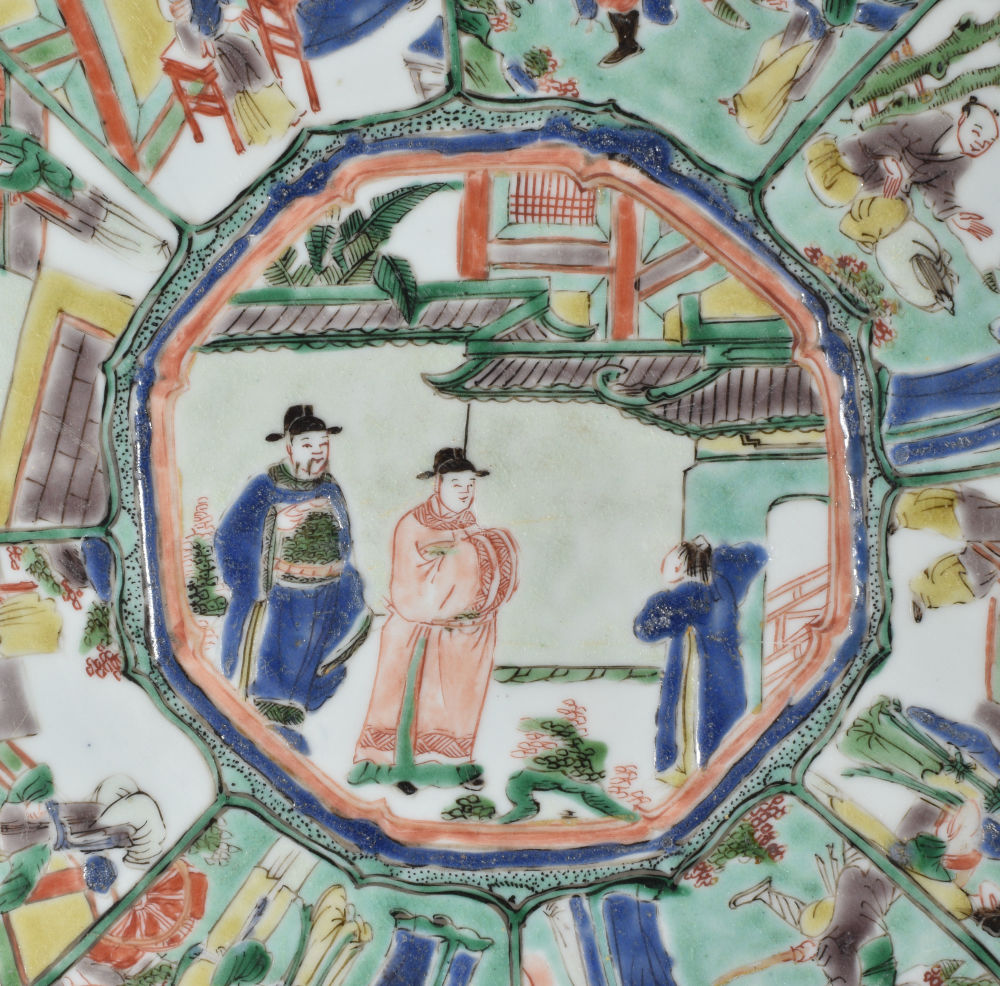
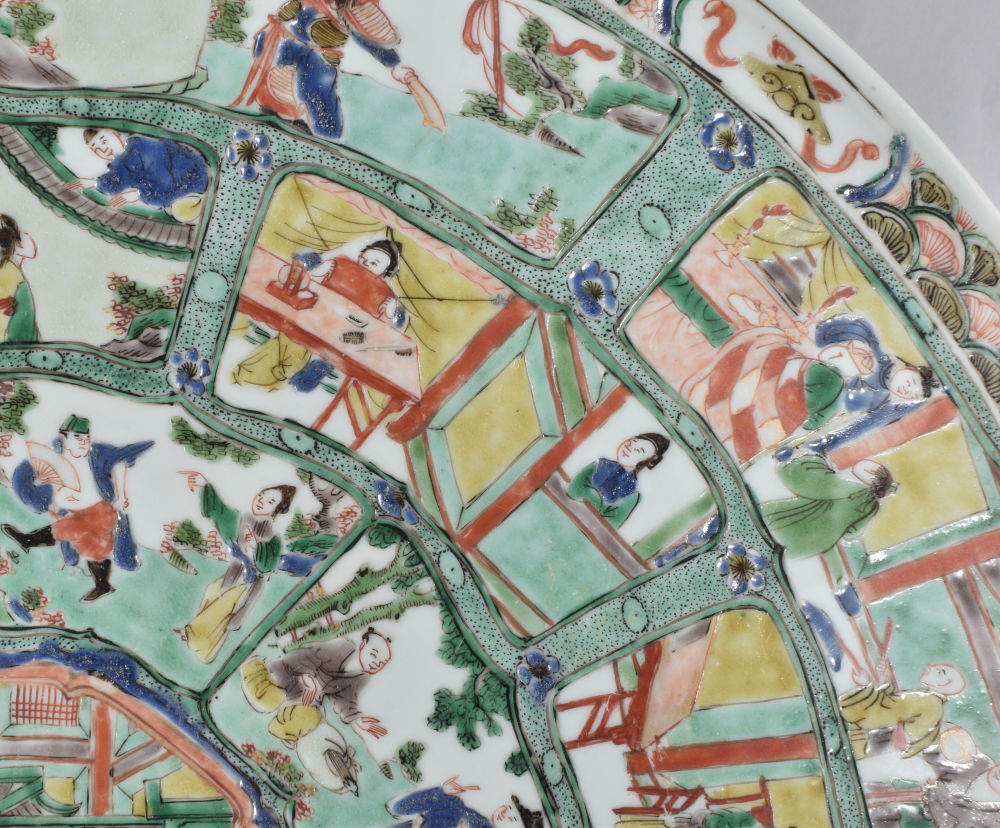
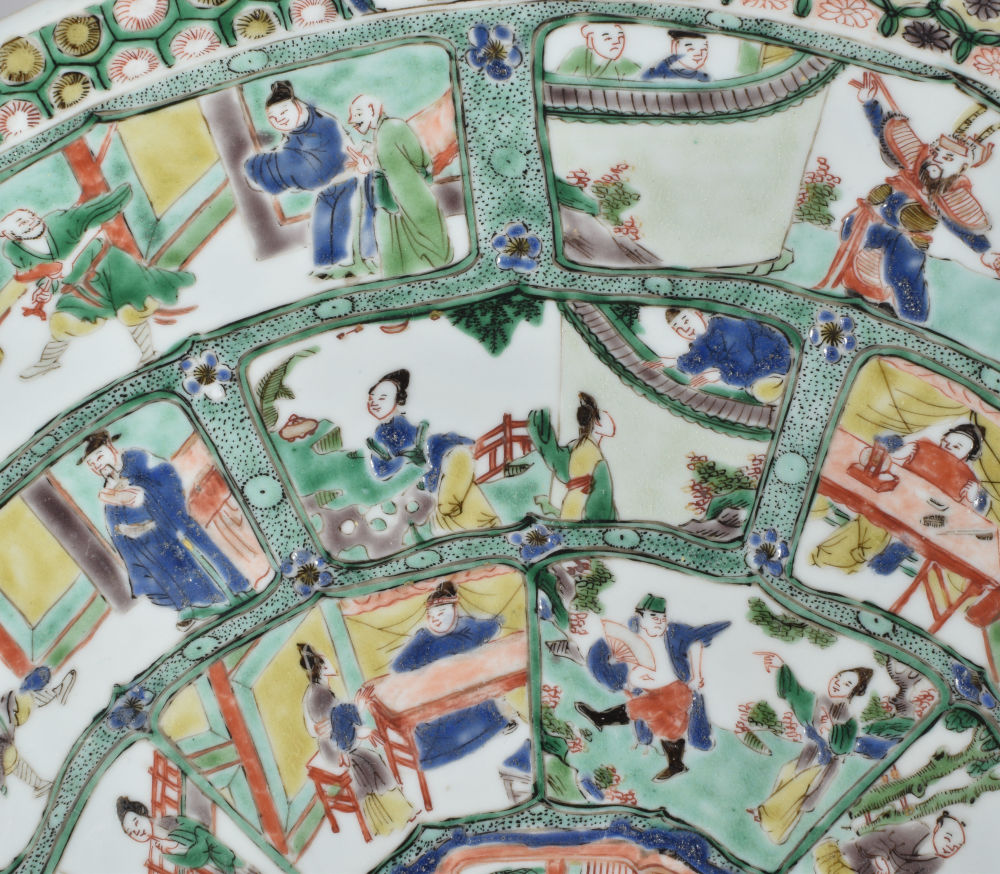
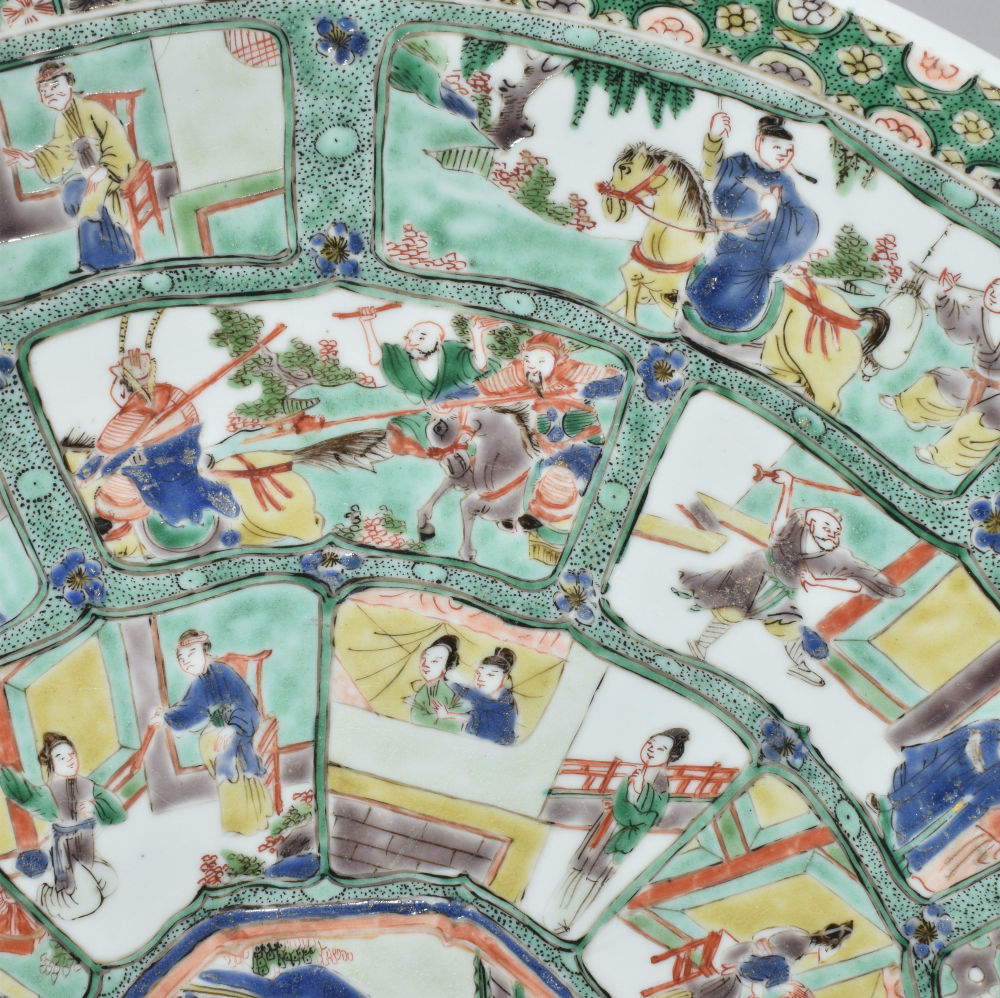
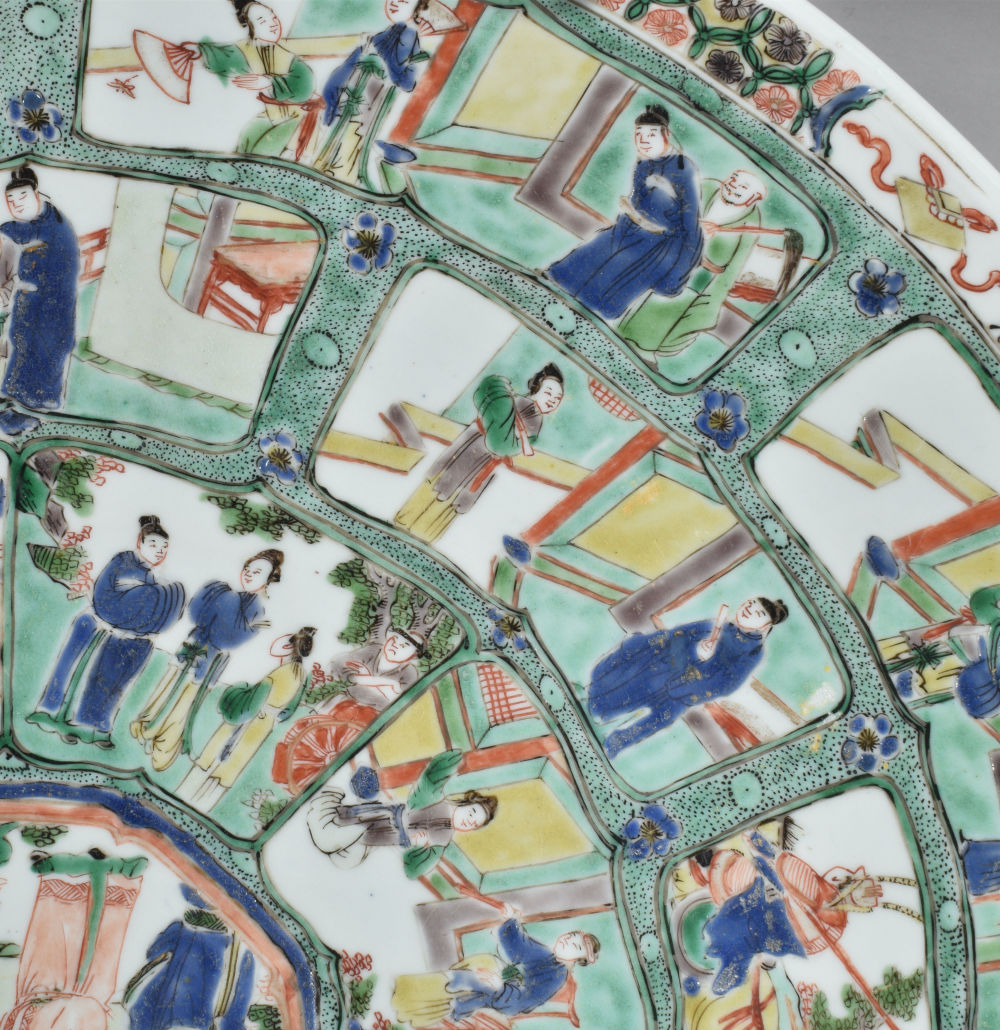
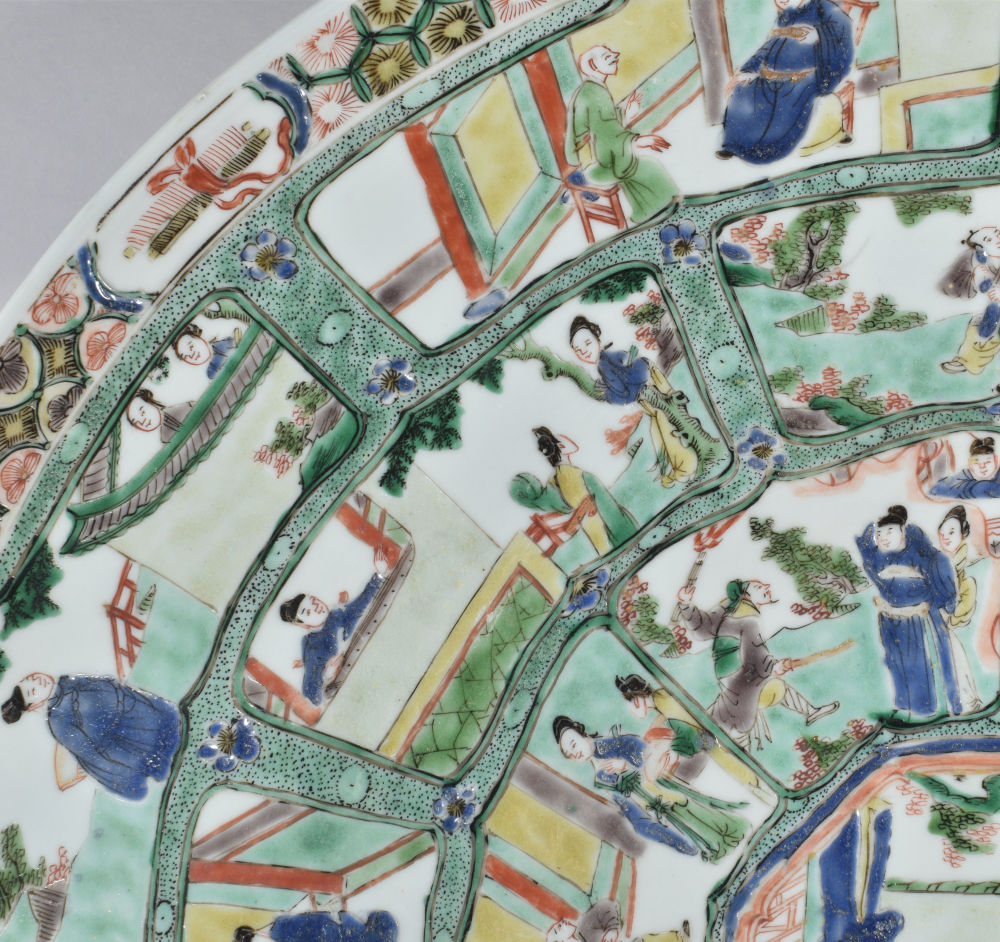
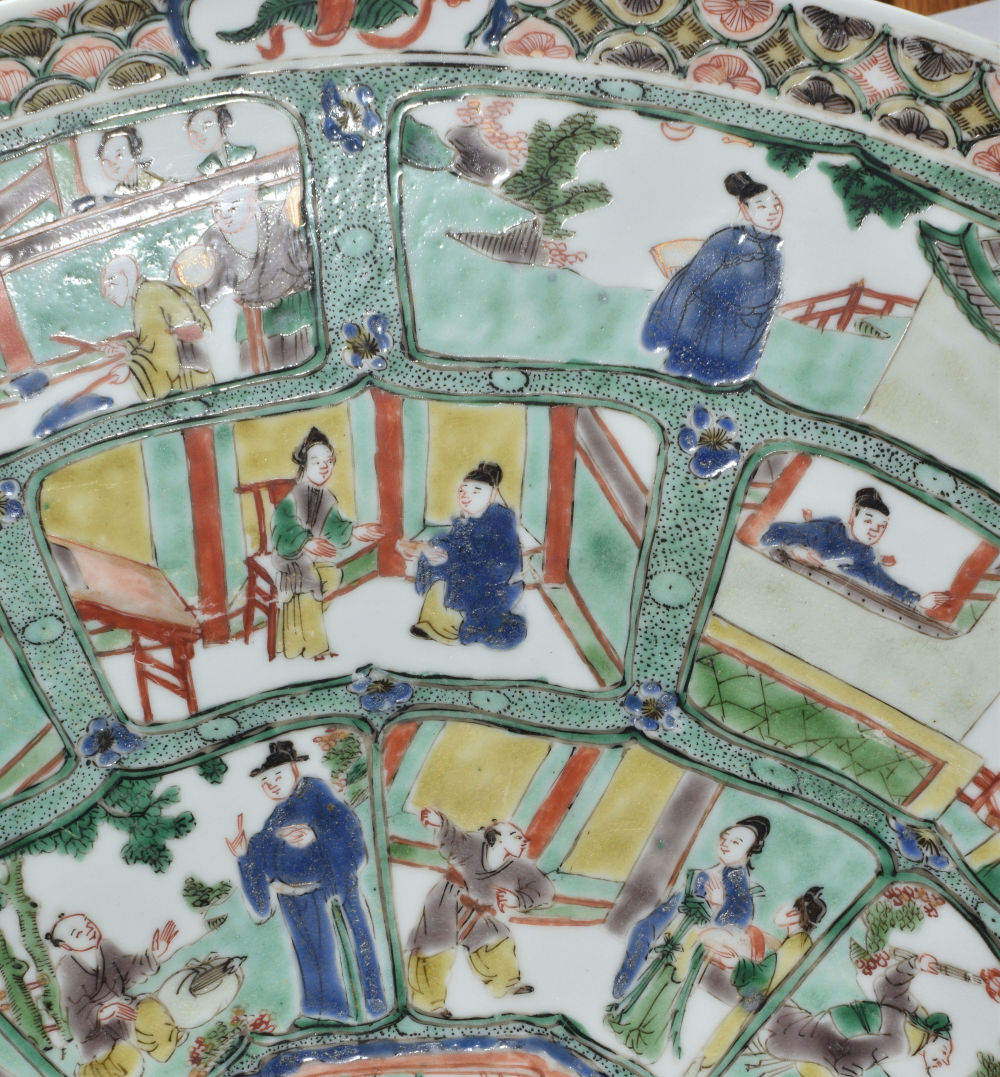
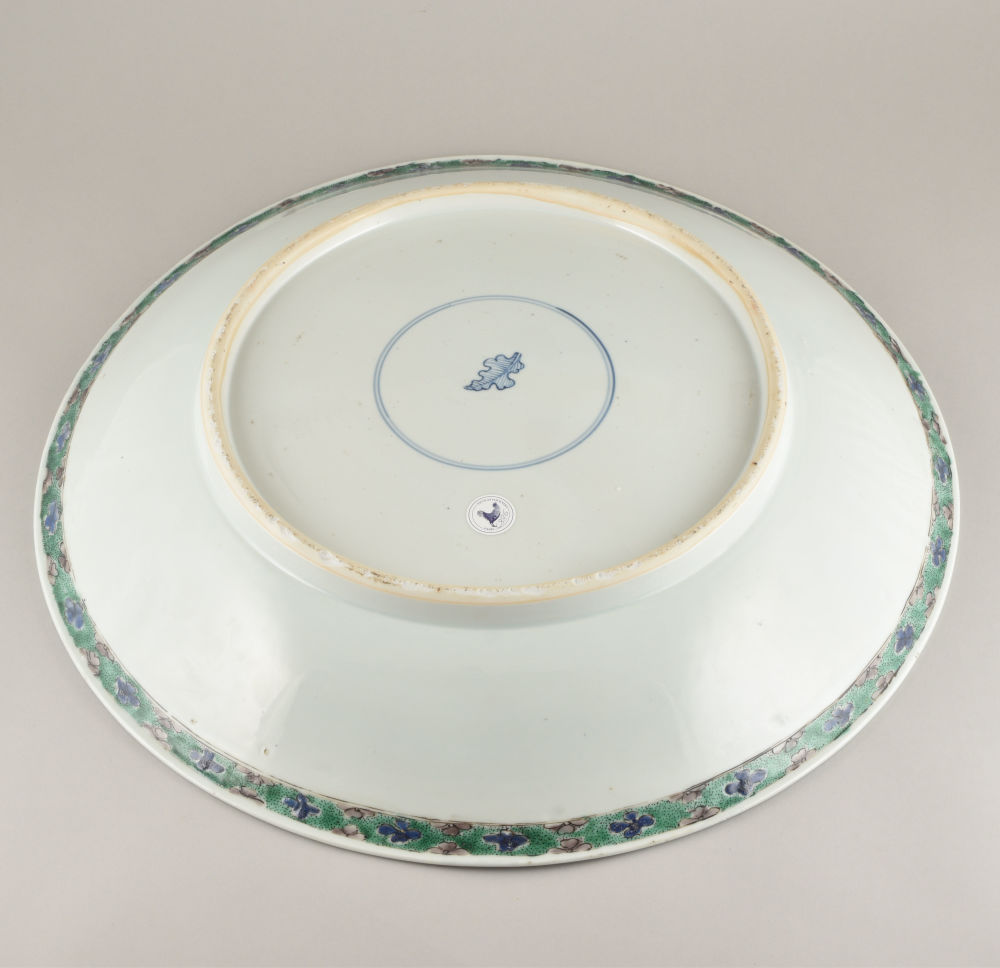
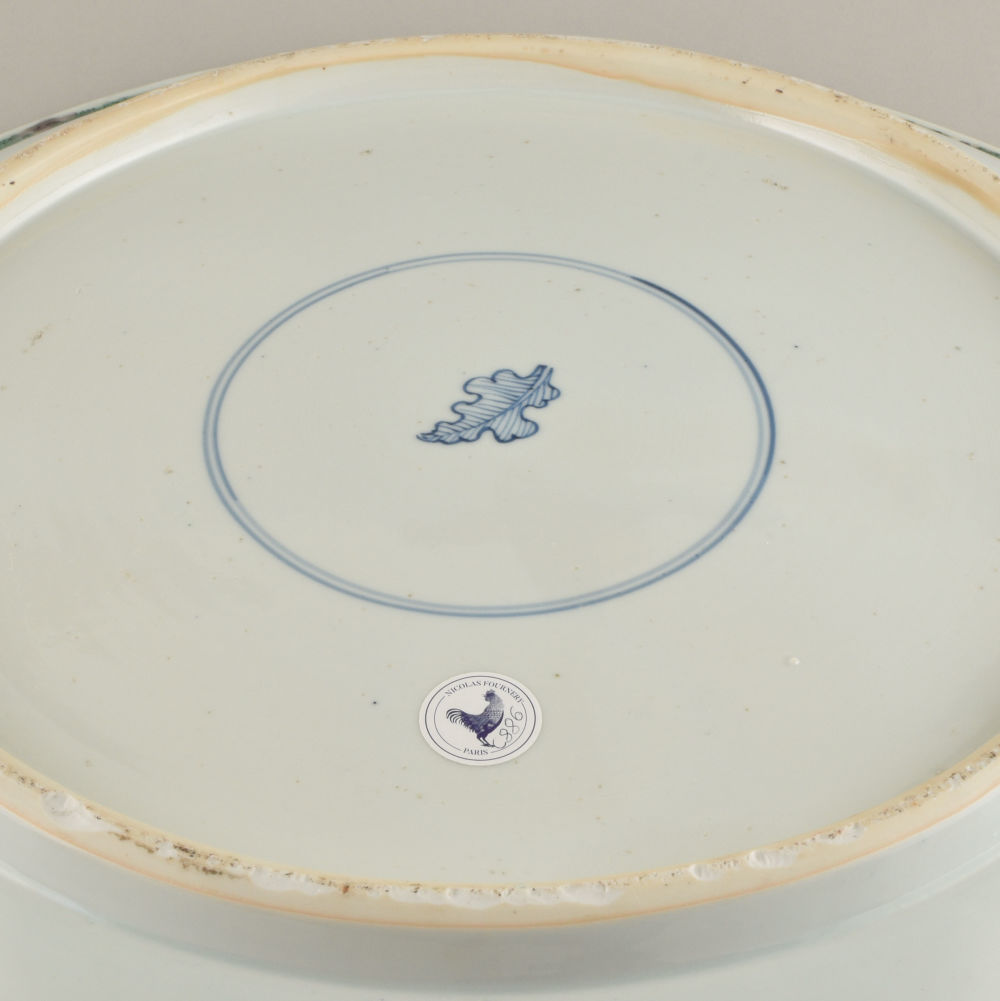
A massive Chinese famille verte dish. Kangxi period
Enamelled with three tiers of panels surrounding a central scene, all illustrating the Romance of the Western Chamber, the rim with a band of various cell-patterns and auspicious objects, the underside with an underglaze blue artemisia leaf mark within a double circle
- Country:
- China
- Period :
- Kangxi (1662-1722)
- Material:
- Porcelain
- Dimension:
- 20.07 in. (51 cm)
- Reference :
- C886
- Price:
- upon request
- Status:
- sold
Provenance
From an important European Collection made around 1960
Related works
An identical dish is in the collection of the Groningen Museum (Netherlands), purchased with the support of the Rembrandt Society and the Friends of the Groningen Museum. The dish is illustrated with a long study by Dr. Christiaan Jörg in Famille Verte: Chinese Porcelain in Green Enamels (Schoten, Belgium: BAI/Groninger Museum, 2011, p. 92-101).
An identical dish was in th Hodroff Collection (Christie’s NYC, The Hodroff Collection, Part II Chinese Export Porcelain From The Collection Of Leo & Doris Hodroff, 23 january 2008, lot 284).
Notice
In China, at the end of the 12th century, a certain Dong Jieyuan wrote a book in which he compiled existing text variants of popular theatrical plays, romances and ballads recounting a well-known love story. It was published as the Xixiangji zhugongdiaoi (The Story of the Western Wing in All keys and Modes). In turn, this book was adapted and expanded by Wang Shift (c. 1250-1300), a playwright, who published it as a comedy play in eight books, called the Xixiangji (The Romance of the Western Chamber). Although the Xixiangji entered the realm of classical Chinese literature, the story itself remained immensely popular among all classes in China. Even as recently as the 1980’s Peking opera companies still staged performances, movies were made and even comics used the theme. Without exaggeration it can be stated that the Xixigji is an essential part of China’s oral, literary and theatrical heritage.
Because the story was so popular in China, the most important scenes became conventionalized images and were easily recognized by the public. Woodblock illustrations in the many editions also concentrated on core scenes, thus creating a corpus of motifs that was widely used by painters, silk embroiderers, lacquer workers and other craftsmen.
Porcelain decorated with “The Romance of the Western Chamber” became a widespread fashion in the Shunzi period (1644-61). These porcelains heralded its popularity on Kangxi (1662-1722). famille verte wares when wares with these depictions were not only produced for the domestic Chinese market but were also exported to Europe.
The romance is told in a series of 24 panels in three bands that follow each other like a modern comic, depicting the essential scenes in the proper sequence. Such extensive depiction of a story like this is very rare, pieces with four (bowls), six or eight scenes (vases, pots) are more prevalent.
After the suppression of the Ming rebellions (1683), porcelain decorations with hidden political messages and allusions to the “good old Ming times” were unwelcome and ne sources for decorations had be found. The “innocent” Romance of the Western Chamber proved to be an ideal source of motifs and seems to have been more popular than any other theatrical scenes or literary stories.




















